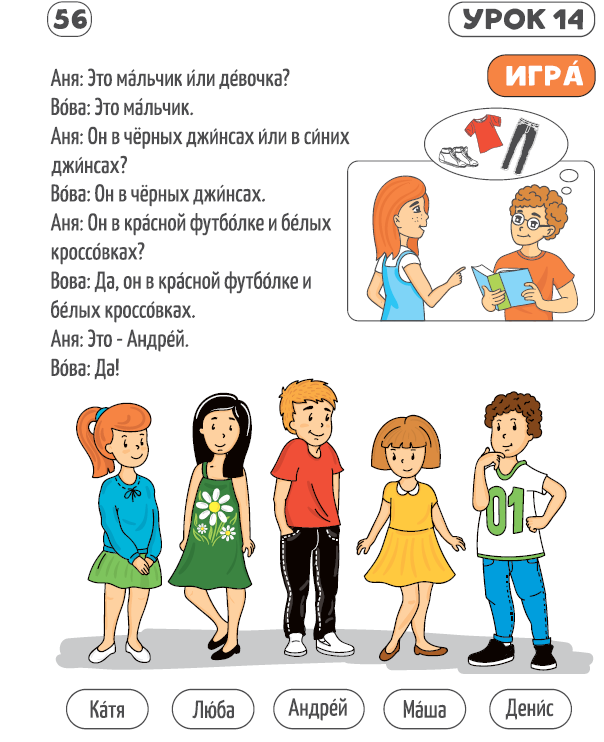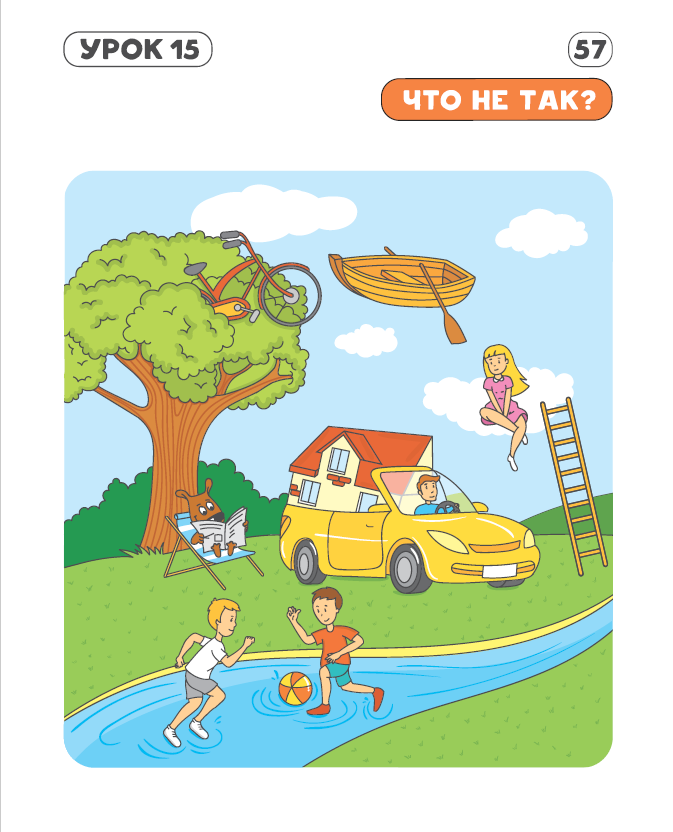In my teaching career, there were situations when students knew grammar well and did grammar exercises correctly, but still ignored all learned grammar rules in their speech. And it didn’t matter what language they had been learning – Russian or English. Teachers often encounter this problem, so let’s figure out what we can do to cope with it.
I suggest taking three steps.
Step 1: Acquaintance
You display this picture to the students and start asking: Is the dog sleeping? Is the dog reading? And your student answers: No, the dog is not sleeping, it is reading. Then we continue: Where is the girl? Is the girl sleeping? Is the girl sitting? Where is the girl sitting? The girl is sitting on the cloud.
We acquaint students with a rule, a word or a phrase. When we meet a person for the first time, we remember his face and name, right? We have the same thing here. If you can recognize, then you can get acquainted. Everybody knows how acquaintance goes – you show an object and say its name. You do the same thing when introducing a new phrase or rule – you show it and pronounce it, so that the students can recognize it.
Step 2: Oral Drill
All words and phrases are to be pronounced. It’s important! For instance, in the topic of “prepositional case” we drill orally all words, which the students already know, in the form of this case: в доме, в облаке, в кофе, в чае, в коробке, в книге. Absolutely all words!
There are two reasons why we need oral drill. The first reason is that the students are involved in the process – their mouths are working; their ears are hearing. It differs from learning the material during lectures or from studying the material by sight, like you are doing now while reading this article, right? We need to have our students speak. We introduce language to speech. That’s why we make THEIR organs of speech work. I want you to understand – YOU already know this language, and now your student should learn how to speak it. If the student doesn’t say anything in the learning language BY HIMSELF, no one will do it for him. There is no other way to learn it.
The second reason: When we speak, we don’t have time to recall the rule. In attempting to do so, our speech becomes slow. I hope you agree with me. That’s why we need to make the pronunciation of words and phrases automated. To do that, we should repeat words and phrases in the form of each case over and over again.
Step 3: Speaking
We drill all words and phrases by using short dialogues presented in the Student’s Book. The little speaking heads of our characters give an example of dialogues, which we further use for our work – asking and answering questions. I want to remind you that we need to escape from inner translation. How do we do this? Through repetition. Repeating after the teacher. Repeating the whole question. Each time you ask a question, the students should repeat it. Then you will see progress. If a student doesn’t understand a question, he or she can hardly repeat it.
To develop speaking skills, we play guessing games. For instance, the game when we speak about clothes of different colors – Андрей в черных джинсах, Катя в зеленом платье, and so on.

Or describe pictures. For instance, view the picture from the Student’s Book of the Soroka 1 course.

You display this picture to the students and start asking: Собака спит? (Is the dog sleeping?) Собака читает? (Is the dog reading?) And your student answers: Нет, собака не спит, собака читает. (No, the dog is not sleeping, it is reading.) Then we continue: Где девочка? (Where is the girl?) Девочка спит? (Is the girl sleeping?) Девочка сидит? (Is the girl sitting?) Где девочка сидит? (Where is the girl sitting?) Девочка сидит на облаке. (The girl is sitting on the cloud.)
The students can do writing and reading exercises only after everything is uttered, and introduced into speech.
Please don’t forget that oftentimes rules exist in the kid’s (or adult’s) head separately from practical application. For instance, a kid learned the traffic rules – red light means stop, green light means go. And the kid seems to know them, but still crosses the road at the red light. To start crossing the road at the green light, he needs to train: He should see the red light first and then stop; next, he should see the green light and keep moving.
Learning how to speak in the foreign language requires the same thing. Students should drill their skills through speaking. That’s it.
Leave your comments and share your opinion.

